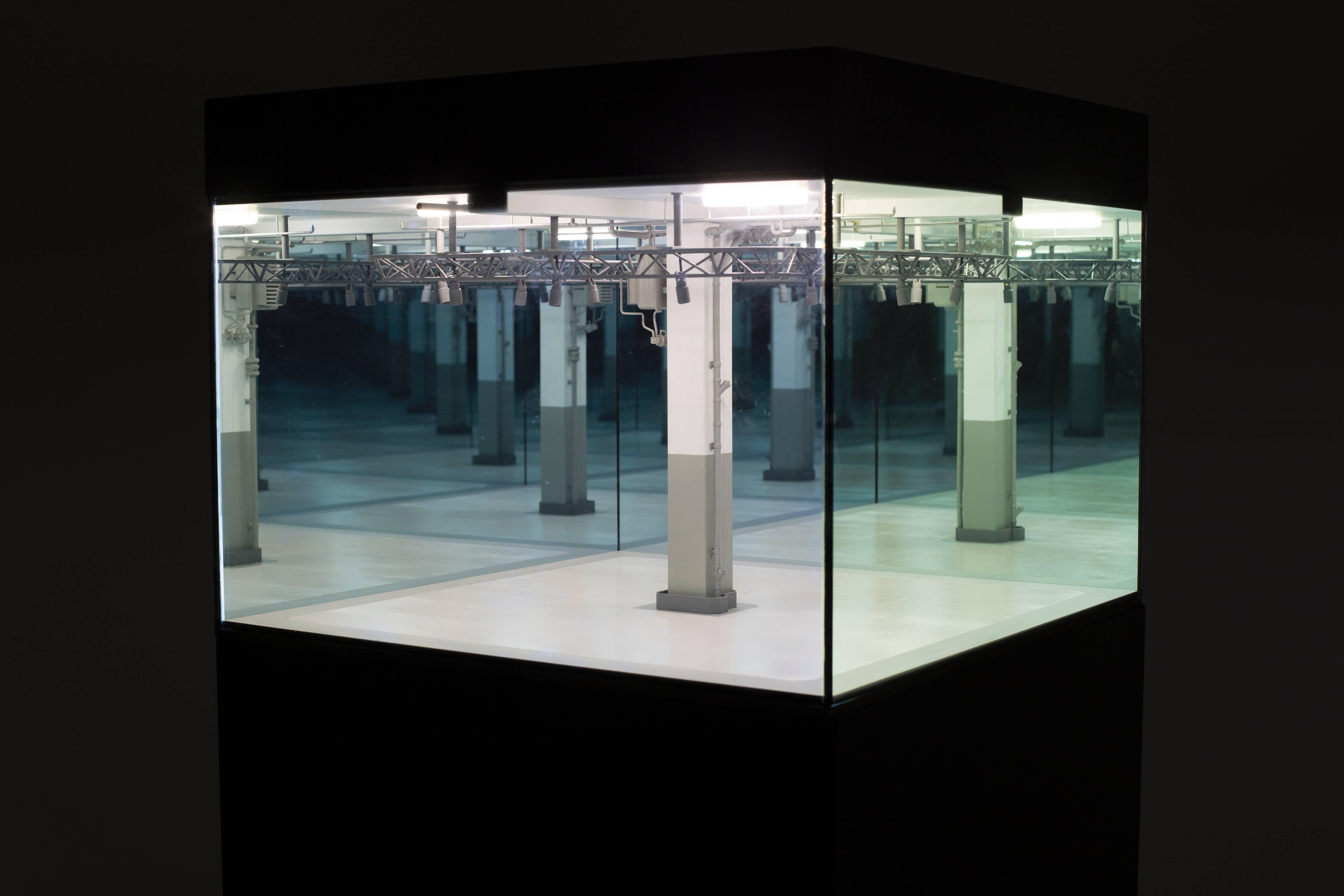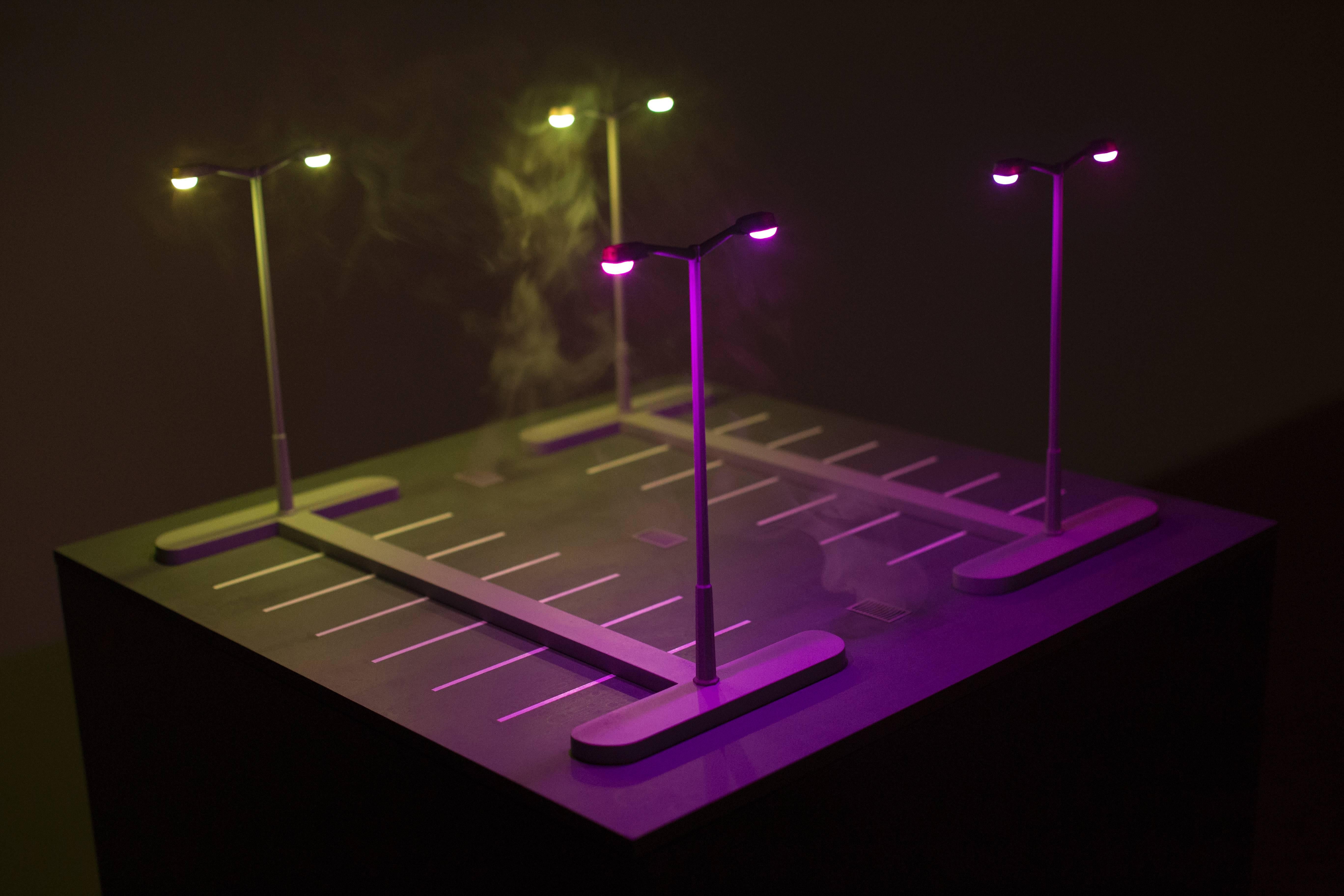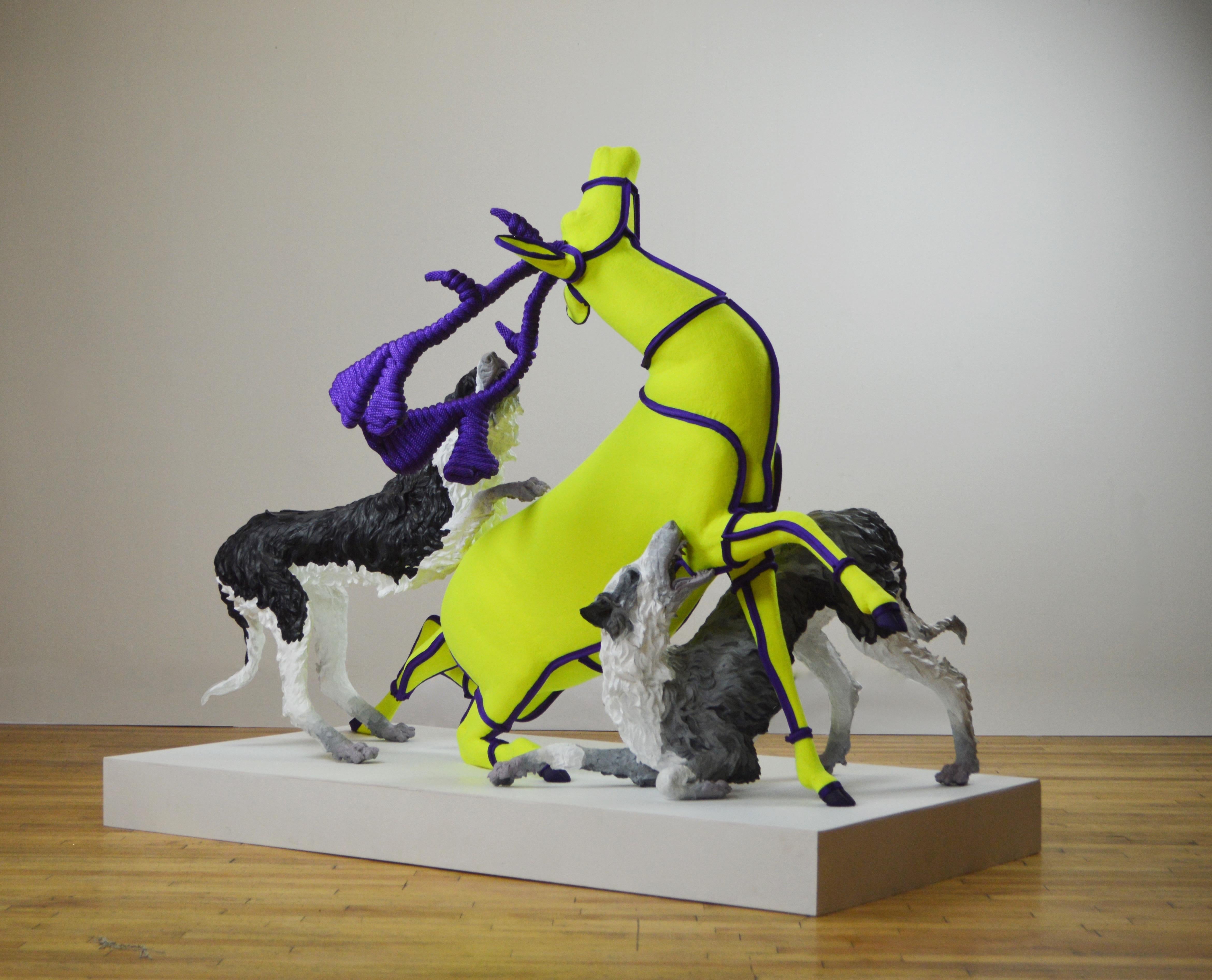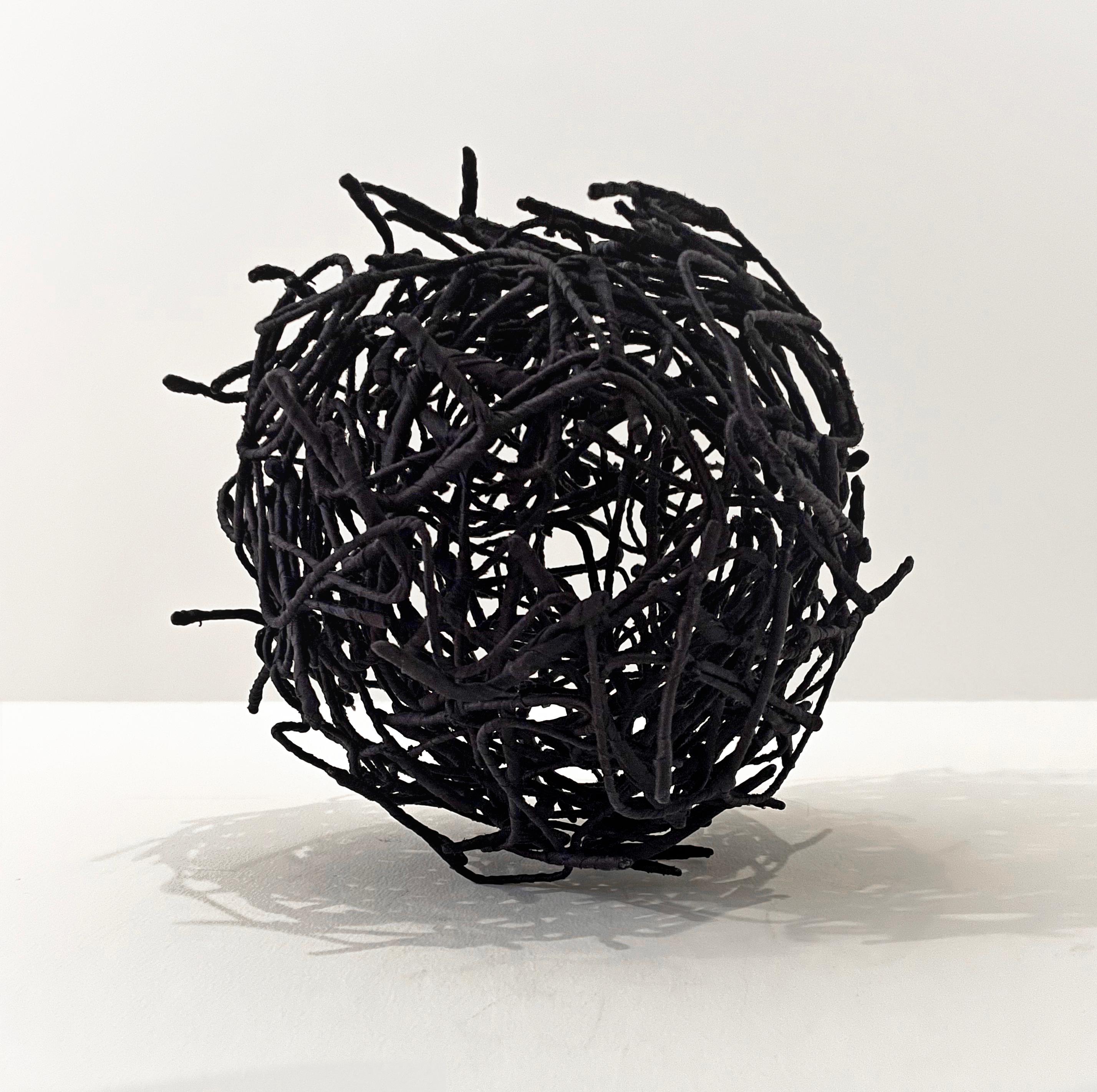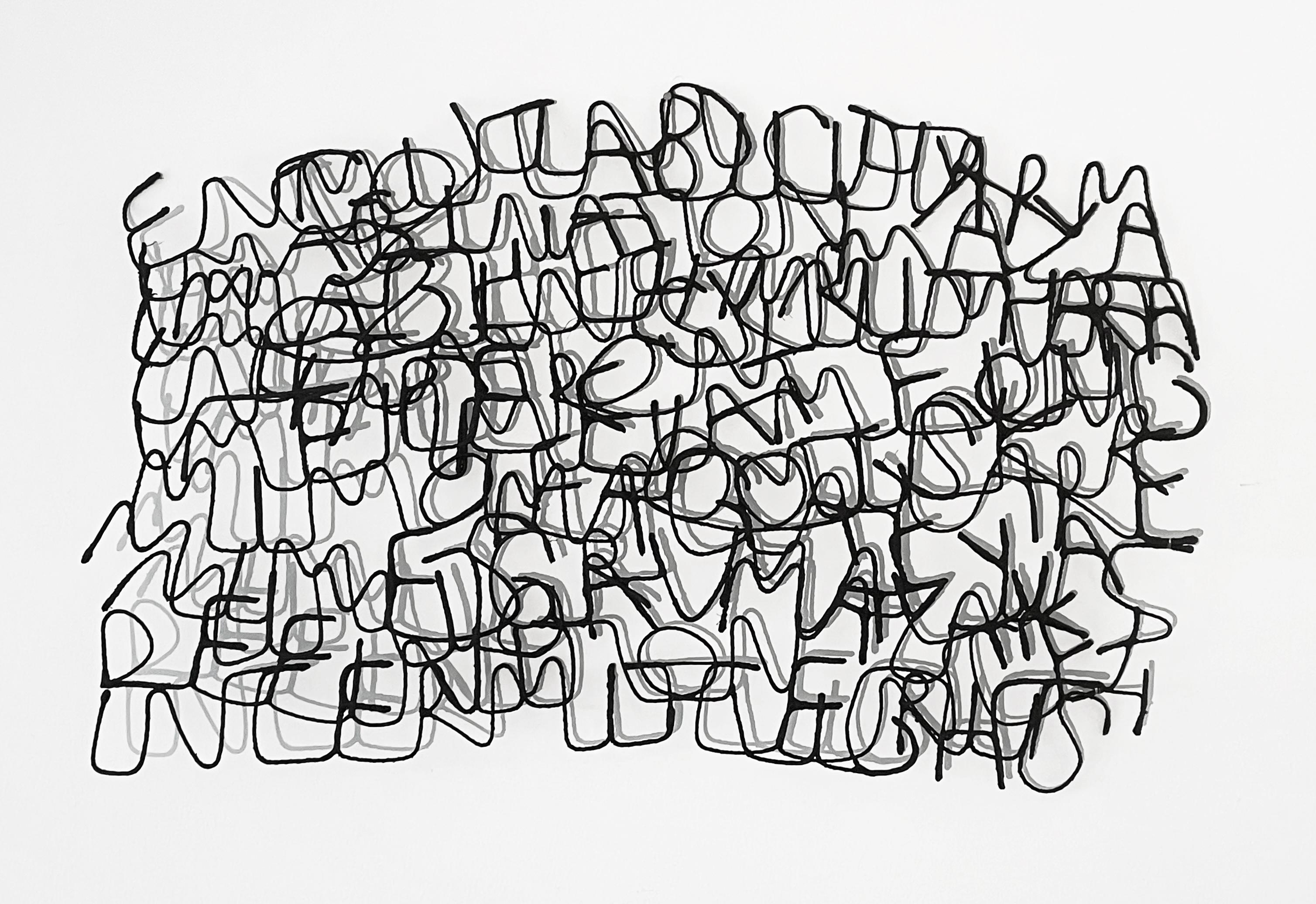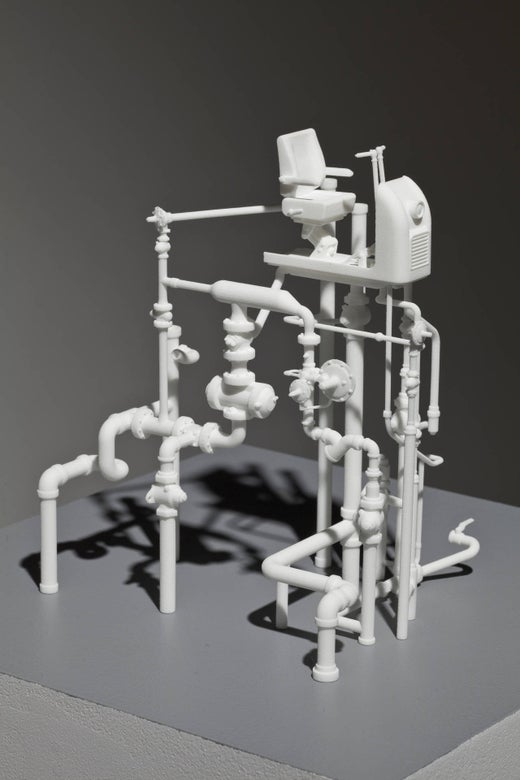Want more images or videos?
Request additional images or videos from the seller
1 of 5
Guillaume LachapelleUntitled2016
2016
About the Item
Text by Terence Sharpe
There is a moment in Andrei Tarkovsky’s Solaris (1972) when the character Hari commits suicide by drinking liquid oxygen. As she is not actually a human, but an artificial hybrid product of the mysterious planet and the protagonists’ memories, she heals rapidly and is alive again minutes later. Her choice to take her own life is poignant, seemingly the action of a being becoming aware of its hopeless infinitude. Her realization that while the men will die on the space station or elsewhere, her existence is that of immortality, a deeply alienating notion that causes her to seek her own destruction. The Montreal artist Guillaume Lachapelle has one work that prompts a sense of eternal alienation that echoes Hari’s tragedy. The work greets the viewer with a empty doorway flanked by clinically white bookshelves. Through the use of mirrors Lachapelle creates reiterations of the doorway within the frame, cascading into infinity, a tunnel with no light at the end of it.
Two of his works, Night Shift I (2016) and Night Shift II (2016) present the viewer with a haunted surrealism in the context of urban spaces. The former presents a first person perspective of an industrial scene, its logic accentuated by mirror imaging. Stroboscopic iterations accentuate the dark corners of the space in hallucinogenic opera that alienates the viewer in their primitive skin. The latter remains open, again playing on subjectivity, using colour and light to highlight the alienation of homogenous spaces. Both works present the internalization of la vie concrète. They allow us contemplation over our own dark matters. That thing that keeps us awake at night, that we are little more then automated biology. When the colours flicker, we stand outside ourselves, becoming aware that our perception is the part of the manic performance. It’s dulled, nullified and contagious. You built this, you live in it, so be a subject to its throes.
Lachapelle’s work accentuates the alienation of the human condition. The object oriented existence of you and I are met with cold slabs of our production line. We’re allowed to take part in the song and dance of sentience, but its thwarted by our nature. We make things non-clinical, we put the human into objects/constructs/systems that don’t need to be human. We become more and more aware of our flesh, this strange thing thrown upon us, if only we could reproduce like the machines. Mimic their rules, their perfection, but we just stand and absorb. The lowest common denominator of being is the one that exudes the most power, but in Lachapelle’s settings we can distance ourselves from this.
- Creator:Guillaume Lachapelle (1974, Canadian)
- Creation Year:2016
- Dimensions:Height: 20 in (50.8 cm)Width: 20 in (50.8 cm)Depth: 7.5 in (19.05 cm)
- Medium:
- Movement & Style:
- Period:
- Condition:
- Gallery Location:Montreal, CA
- Reference Number:1stDibs: LU4761244403
Guillaume Lachapelle
Guillaume Lachapelle’s artistic practice is shaped predominantly by sculpture, expressed in the form of installations and detailed miniature models. Lachapelle presents playful universes which combine objects of undetermined purpose; in this way, he opens the conventions of our reality to fresh disposition. The architecture of his models – which Lachapelle has recently begun to make with the help of the latest 3-D printing technology – shows motifs originating from the everyday, certainly, but seeming strange, alienating or even uncanny when combined as the artist chooses. A kind of transition between two worlds often appears in Lachapelle’s work – for example when the model of a library filled with books curves inwards and reveals a mysterious opening pointing into darkness – these are the artist’s references to spaces and occurrences which may be concealed below the surface of outward semblance. Guillaume Lachapelle has participated in several solo and group exhibitions including Manèges at Circa – Centre d’Exposition Art Contemporain (Montreal) in 2006; Quebec Gold at the Ancien Collège des Jésuites (Rheims, France) in 2008 and in Abracadabra (Edward Day Gallery, Toronto) in 2008. Recently, he completed a permanent commemorative sculpture in Belmont Park (the site of an amusement park that operated between 1923 and 1983) located in the Ahuntsic-Cartierville neighbourhood of Montreal.
About the Seller
5.0
Vetted Seller
These experienced sellers undergo a comprehensive evaluation by our team of in-house experts.
Established in 1996
1stDibs seller since 2014
96 sales on 1stDibs
- ShippingRetrieving quote...Ships From: Montreal, Canada
- Return PolicyA return for this item may be initiated within 7 days of delivery.
More From This SellerView All
- Night ShiftBy Guillaume LachapelleLocated in Montreal, QuebecText by Terence Sharpe There is a moment in Andrei Tarkovsky’s Solaris (1972) when the character Hari commits suicide by drinking liquid oxygen. As she is not actually a human, but an artificial hybrid product of the mysterious planet and the protagonists’ memories, she heals rapidly and is alive again minutes later. Her choice to take her own life is poignant, seemingly the action of a being becoming aware of its hopeless infinitude. Her realization that while the men will die on the space station or elsewhere, her existence is that of immortality, a deeply alienating notion that causes her to seek her own destruction. The Montreal artist Guillaume Lachapelle has one work that prompts a sense of eternal alienation that echoes Hari’s tragedy. The work greets the viewer with a empty doorway flanked by clinically white bookshelves...Category
2010s Contemporary Figurative Sculptures
MaterialsNylon, Glass, Wood, LED Light, Acrylic
- Night shift IIBy Guillaume LachapelleLocated in Montreal, QuebecText by Terence Sharpe There is a moment in Andrei Tarkovsky’s Solaris (1972) when the character Hari commits suicide by drinking liquid oxygen. As she is not actually a human, but an artificial hybrid product of the mysterious planet and the protagonists’ memories, she heals rapidly and is alive again minutes later. Her choice to take her own life is poignant, seemingly the action of a being becoming aware of its hopeless infinitude. Her realization that while the men will die on the space station or elsewhere, her existence is that of immortality, a deeply alienating notion that causes her to seek her own destruction. The Montreal artist Guillaume Lachapelle has one work that prompts a sense of eternal alienation that echoes Hari’s tragedy. The work greets the viewer with a empty doorway flanked by clinically white bookshelves...Category
2010s Contemporary Figurative Sculptures
MaterialsNylon, Glass, LED Light, Acrylic
- FetchLocated in Montreal, QuebecIn his recent works sculptor Nicholas Crombach uses the markers of tradition to critique social rituals. Through the employment of the mythology and the rich visual culture of the hunt, Crombach assembles works which revel in contradiction. He has created a series of unexpected juxtapositions that examine the cultural significance and the complex issues percolating around hunting and sporting traditions in the 21st century. For this exhibition, Crombach riffs off the myth of Diana and Actaeon, which provides a poignant framework for his theme. In the original story, Actaeon, the hunter and grandson of King Cadmus, is in the forest with his dogs, when he spies Artemis (Diana) in her bath attended by her nymphs. Diana was the goddess of the hunt, but when the mortal Actaeon sees her, her nymphs try to cover her modesty. She splashes him with water, turning him from a mortal man into a stag, who flees into the forest only to be hunted down and killed by his own dogs. The hunter becomes the hunted. Crombach’s Fetch (2018) refers to the mythology of Diana and Actaeon as he transforms the lofty and classical story of metamorphoses into a game of fetch in the local park, constructed on a grand scale. In Fetch (2018), Crombach creates a hybrid between the art historical imagery from paintings of hounds hunting stags with the flashy colours and synthetic materials of modern day dog chew toys. The sculpture is displayed alongside a variety of chew toys that act as an index for the sculptures interpretation, some transformed into porcelain that has been marked with the aristocratic hunting motifs found on antique English pottery. Here, the assembly of works create a conversation on the blurred boundaries between: histories of domestication, the working relationships we have with animals, contemporary issues of hunting as “play”, tradition and survival. A second major new sculpture “End of the Chase” is a collapsed version of a Victorian period rocking horse housed in London’s V&A Museum Of Childhood. The sculpture responds to the 2014 hunting act that passed in Britain which in turn attempts to obliterate the tradition of hunting with hounds, most commonly associated with the fox hunt...Category
2010s Contemporary Figurative Sculptures
MaterialsAcrylic, Polyurethane, Nylon, Resin
- CentaureBy Guillaume LachapelleLocated in Montreal, QuebecGuillaume Lachapelle’s artistic practice is shaped predominantly by sculpture, expressed in the form of installations and detailed miniature models. Lachapelle presents playful unive...Category
2010s Contemporary Figurative Sculptures
MaterialsNylon
- ObsolescenceBy Guillaume LachapelleLocated in Montreal, QuebecGuillaume Lachapelle’s artistic practice is shaped predominantly by sculpture, expressed in the form of installations and detailed miniature models. Lachapelle presents playful unive...Category
2010s Contemporary Figurative Sculptures
MaterialsNylon
- Centaure (large)By Guillaume LachapelleLocated in Montreal, QuebecGuillaume Lachapelle’s artistic practice is shaped predominantly by sculpture, expressed in the form of installations and detailed miniature models. Lachapelle presents playful unive...Category
2010s Contemporary Figurative Sculptures
MaterialsNylon
You May Also Like
- BreathLocated in New Orleans, LAThierry Job was born in Marseille, France and currently lives in San Miguel de Allende, Mexico. He studied art at the School of Beaux Arts in Paris. His works as been exhibited at th...Category
2010s Contemporary Figurative Sculptures
MaterialsSteel
- Fiber Sculpture: 'IMAGINATION'By Federica Patera and Andrea Sbra PeregLocated in New York, NYImage, Imagination, Imitation: we can think these three words come from the roots √Im, but it’s not true. It’s necessary to combine the proposition in with mi, that is, √Mei, to obtain this kind of words. √Mei recalls something that catch the attention, that is intermittent and that can change. For the three following artworks we decided to decline the root starting from the concepts of light and sound, using a set of different languages, such as English, Russian, Sanskrit, Latin, Avestan, Greek and Persian, and to create shapes...Category
2010s Contemporary Figurative Sculptures
MaterialsSteel, Wire
- Fiber Wall Sculpture: 'IMAGE'By Federica Patera and Andrea Sbra PeregLocated in New York, NYImage, Imagination, Imitation: we can think these three words come from the roots √Im, but it’s not true. It’s necessary to combine the proposition in with mi, that is, √Mei, to obta...Category
2010s Contemporary Figurative Sculptures
MaterialsWire, Steel
- Vision#1 (Barranco)Located in Roma, RMFrom the series Salud Y Pesetas. It is a new series of works that, inspired by ancient Iberian archelogical artefacts, their findings and forgeries, unravel potential reinterpretatio...Category
2010s Symbolist Figurative Sculptures
MaterialsNylon, Clay, Cord, Glass, Acrylic Polymer
- Yayoi Kusama Set of 2 Small Plush Pumpkin (Red White and Yellow Black))By Yayoi KusamaLocated in Central, HKYayoi Kusama Large Set of 2 Pumpkin Plush Yellow and Black & Red and White, 2004 Polyester, Nylon 6 × 9 9/20 × 9 9/20 in 15.2 × 24 × 24 cm (each)Category
2010s Figurative Sculptures
MaterialsNylon, Polyester
- Yayoi Kusama Plush Pumpkin (Yellow and black pumpkin)By Yayoi KusamaLocated in Central, HKYayoi Kusama Pumpkin Plush Yellow (Small), 2004 Nylon 6 x 9 2/5 in diameter 15.24 x 24 cm diameterCategory
2010s Figurative Sculptures
MaterialsNylon, Polyester
Recently Viewed
View AllMore Ways To Browse
Mens Nylon
T Sculpture Dancer
Bookshelves Open
Used Wood Bookshelves
Primitive Mirror
Used Drink Machine
The Wood And The Suicide
Led Infinity
Dior Drinking Glasses
End Of The Tunnel
Urban Primitive
The Met Opera Light
Corner Bookshelves
Dancing Bookshelves
Balloon Animal
Surf Sculpture
Nickel Dog
Kaws Companion 2016
